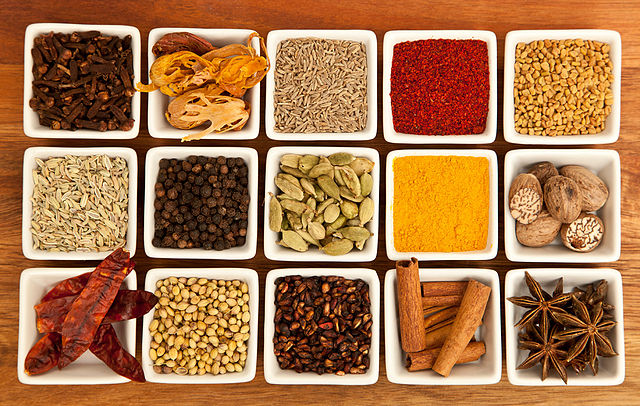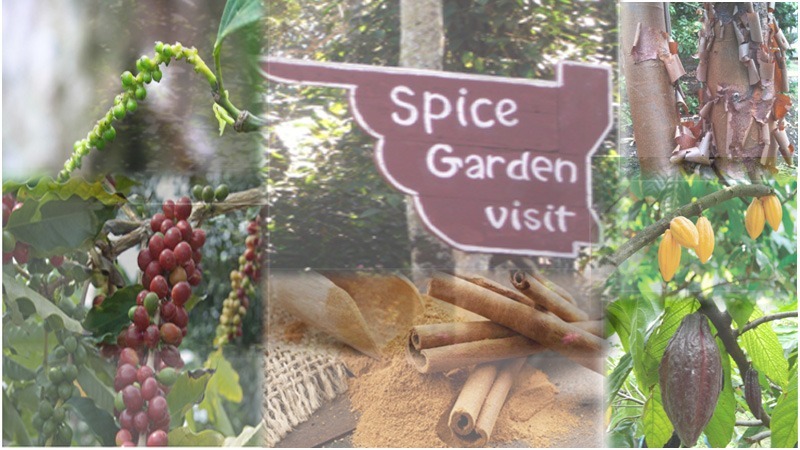Kerala Spice Garden is more than just a destination—it is an immersive experience that captivates the senses. In the following article, we explore the intricate flavors, aromas, and traditions of Kerala’s spice heritage. Whether you are a traveler, a foodie, or simply curious about nature’s bounty, this guide offers a deep dive into the world of spices.
Our Journey to the Kerala Spice Garden
What is life but a mélange of different spices with each type adding its own unique flavor and aroma? During one of our time-outs, we decided to explore the origin of these spices and witness the various stages of their lifecycle.
While we were absorbing the tranquility of the seemingly endless verdant tea gardens at Munnar, our guide popped a question that completely caught us off guard. He wanted to know our duration of stay at Thekkady/Kumily and when we answered that we had not included this spot in our itinerary, it was his turn to react. A visit to Kerala without a single trip to a spice garden? Unbelievable!!! His reaction prompted us to rethink and soon we were on our way to Kumily, ensuring that a kerala spice garden was included in our itinerary.
Ensconced amidst an undulating green landscape that marks Cardamom Hills is Kumily, a relatively small town that has embarked on urbanization without compromising on its rural character. The streets are a picture of contradiction – next to a contemporary setup meant to serve as a commercial outlet for locally grown spices, you would invariably find a traditional business being run as it would have been for the last few decades. Because this region has served as a melting pot for a variety of spices for hundreds of years, it is but natural for spice gardens to form an integral part of life here.
The Unique Aroma and Lifecycle of the Special Spices from Kerala Spice Garden
Soon after we were settled at our resort, it was time to venture out and a visit to a kerala spice garden seemed like an ideal way to start. Kerala Spice Garden‘s very own “Kerala Spices” became our salvation that day and, to tell the truth, it did live up to our expectations in every way. Not long after having bought tickets amidst a whiff of strong scents hanging in the air, we suddenly found ourselves enveloped within a cloak of thick green canopy.
Following our guide through the maze of trees, we realized that spice-bearing trees or shrubs did not appear to be any different from other types of foliage, meaning it was possible to be blissfully ignorant of their presence unless you knew how to identify them. As novices, we were totally dependent on our guide to point out the particular tree/shrub, its leaves, pods, and aroma, not to mention the bark.
Detailed Spice Analysis of the Special Spices from Kerala Spice Garden
1. Pepper: Nature’s Dual Wonder
For the first time, we saw how the pepper that we use in our homes was grown. We were amazed when told that both black and white varieties of pepper were harvested from the same plant. Pepper trees bear fruit in the form of vibrant red berries which stand out in sharp contrast to the dull green surroundings. If harvested at this stage, the seeds within are powdered into white pepper; if left on the tree to ripen, they transform into green pods. Next, they can either be preserved as green pepper for their coveted flavor or alternatively dried until they turn black, namely peppercorns, meant to spice things up in Indian kitchens.
2. Cinnamon: The Sweet and Spicy Delight
Yet another revelation was cinnamon. We were briefed on how its bark was extracted and dried to form the famed cinnamon rolls that are prized for their flavor, aroma, and medicinal properties.
3. Cocoa and Vanilla: A Treat for the Senses
Cocoa and vanilla cultivation was something that we found most interesting, probably owing to our fondness for chocolates and ice creams. Especially the fact that vanilla is one of the most expensive spices in the world, owing to its unique method of pollination, was a point that had us truly amazed. It so happens that vanilla pods can be pollinated only by a particular species of bird and, subsequent to pollination, the fruit takes its own time to mature and ripen.
Likewise, cocoa is harvested from cocoa pods which start off as yellow cucumbers and gradually acquire a dark brown tinge when they ripen. Cocoa thus obtained is pure and organic and hence one of the most sought-after in the world. There is a by-product too, namely cocoa butter, which serves as a base for skin care products courtesy of its ability to moisturize while emanating a delicious scent.

Tips for Visiting a Kerala Spice Garden
Visiting a Kerala Spice Garden is an enriching experience. Here are some tips to help you make the most of your visit:
-
Plan Ahead: Check the opening hours and any seasonal variations.
-
Guided Tours: Opt for a guided tour to fully understand the lifecycle of the spices.
-
Wear Comfortable Shoes: The terrain can be uneven, so comfort is key.
-
Take Notes and Photos: Document your visit for future reference.
-
Try the Local Cuisine: The kerala spice garden, like many others, offers culinary experiences that highlight local flavors.
For more detailed travel advice, you can read our comprehensive travel guide on swadesi.com.
What rendered our trip truly memorable was the organic method of cultivation and the sustained manner in which the entire establishment was managed. It not only ensured the purity of spices but also guaranteed survival for many long years in the future without leaving as much as a tiny imprint on the environment.
Stepping out of the gates after what seemed like a lifetime in the wilderness, all that remained of our trip to the spice garden was the heady feeling that comes from having inhaled a variety of aromas within a relatively short duration.
For further reading on spice cultivation and sustainable farming practices, check out reputable resources like National Geographic and World Atlas. These external sites provide additional insights into the natural processes and history behind spice cultivation.



